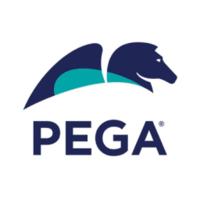By Ralph Booth and Anthony Kirkham, Pega Express Directors, supporting the EMEA and APAC regions.
Our opening blog for Pega Express™ month is all about how clients can get from their vision to an agreed minimum lovable product (MLP), or MLP roadmap. This is a common question we hear when talking to our clients. You see, at the heart of achieving controlled transformation is having an approach that incrementally drives sustainable change through identifying, designing, and prioritizing the right end-customer Microjourneys™ (Pega’s way of breaking down larger customer journeys into smaller more manageable pieces). By taking an incremental approach that considers the end customer’s needs, technical feasibility, and business risk, you can create a roadmap of transformational MLPs that inspire your organization to achieve even greater things!
Let’s explore this concept in more detail. Clients always have an overarching vision that they want to achieve through their technology implementations. Sometimes, understanding where the right place is to start and what the right thing to start with is, can be a daunting experience. With Pega Express we advocate the use of design thinking techniques, such as design sprints, that can help us navigate through the complexity of future and existing processes. This ensures that the team takes a fresh look at the key business outcomes that need to be achieved, and how best to achieve them, through the concept of Microjourneys.
Even though you may not always be able to immediately run a design sprint, the principles can still be applied by using storyboarding techniques, which can scale up and down and help clients break their vision into manageable MLP releases that can be incrementally delivered and tested. Think of this as a plan B if design thinking is not an option!
Clients can start by defining the overall vision, business outcomes, and key metrics that they want to achieve through their Pega application. An example might be a vehicle breakdown service that wants to modernize their organization, improve customer satisfaction, and attract new customers while retaining their existing customers.
The next step is to capture the as-is, high-level, end-to-end journey with the personas that forms the overall process. To do this we first need to understand the experience and the steps that end customers go through today, either by making side-by-side observations with customer-facing roles, or by conducting an operational work-through or similar workshops with the key subject matter experts. This exercise should help identify the steps, the pain points, and ultimately the smaller journeys (the Microjourneys) that make up the overall customer experience. Back to our example, the Microjourneys of onboarding a new customer, providing roadside assistance, and renewing a roadside assistance coverage policy will be naturally identified and captured as part of this end-to-end journey map.
With the as-is journey map understood, the next step is to move onto the to-be journey map. This is an intermediate step that will help us arrive at our storyboard and MLP Roadmap. It is here that we start to understand how we can simplify the process and how Pega technology can be positioned to solve the client’s problem, and this step helps create something lovable that is likely to be adopted. As we go through the to-be journey mapping, the Microjourneys start to take greater shape and what would give our vehicle breakdown service and their customers the most value becomes clearer. We can also use what we have learned so far, with the to-be journey map, to help us create a visual story board (which can be created in collaboration with the client). Storyboards are a powerful tool that bring the customer’s experience and journey to life; they help to give the teams a glimpse of what the proposed solution is like. A storyboard is used to create a visual representation of the human experience of the journey. Through storyboarding, the client can really start to understand the proposed solution before we start configuring the application.
Once the client is comfortable with the to-be journey map and storyboard, we can capture the stages and steps in App Studio. For each Microjourney, we want to capture the three pillars (key building blocks of a Pega application) and flag the MLP release with which they will be delivered. It’s here that we can also start to be a lot more specific: we can capture integrations, complexity, supporting features, and reports. We’ll start to get a picture of the shape and size of each MLP release using the estimator tool that came in Pega Platform version 8.5. This exercise also helps surface any technical dependencies that may jeopardize a rapid delivery – for example, a missing integration – which can help influence the order in which the MLPs are delivered.
Central to the Pega Express approach are innovative techniques, such as those discussed above, that not only help our clients design solutions with their own end users in mind, but also prioritize the right Microjourneys to achieve their vision and business outcomes. You can learn more about Pega Express and what else is happening this month on our community home page. What’s more, if you’d like to get your Pega Express Delivery badge, head on over to Pega Academy today.
Don't forget
-
JOIN THE CONVERSATION on Collaboration Center
-
FOLLOW @PegaDeveloper on Twitter
-
SUBSCRIBE to the Pega Developer Podcast on Spotify or via RSS


